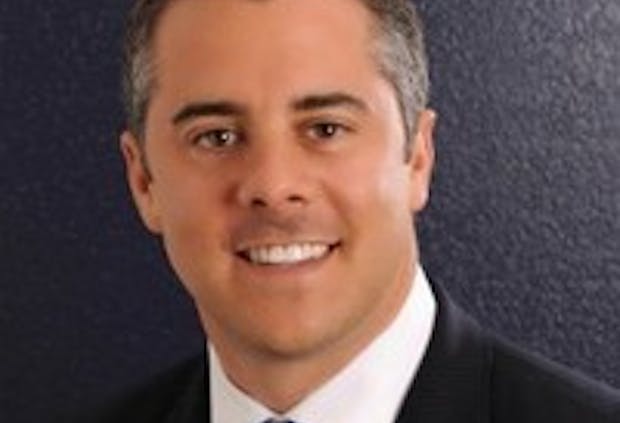
Career Highlights:
- Dallas Cowboys, executive vice president, business operations, 2017 – present, vice president of sales 2007 – 2017
- Legends, executive vice president, 2018 – present, president global sales 2010 – 2018
- Cleveland Cavaliers, chief marketing officer, 2006-07, vice president of sales, 2001 – 2006
- Tampa Bay Lightning, vice president of sales, 1999 – 2001
- Ohio University, Master’s degree, Sports Administration, 1994
You were an undergraduate at Ohio University, what prompted the decision to continue your journey there with the Master of Sports Administration?
I was a college athlete, playing basketball at Ohio and I didn’t have a real strong idea of what I wanted to do – I thought I would go into business but I didn’t know in what area specifically.
I learned about the programme as an undergraduate by speaking to someone who was studying it at that time. I quickly thought that this could combine my interest in sport with my interest in business. I really didn’t know that this opportunity existed at the scale it did until this point. The real revelation for me was looking through the programme’s alumni yearbook and seeing all the high-profile positions that people held across the industry.
I was advised to pursue an internship to boost my chances of being accepted onto the programme and so the summer between the junior and senior year of my undergraduate I was an intern at the Cleveland Cavaliers.
Is the transition from college level athlete to a career in the sports industry a common one in your experience?
Many people we hire or that I’ve worked around have played collegiate sports or have some athletic background. It makes sense because people develop their passion through participation and want to stay around sport – for lots of people who work within our industry it simply begins with that.
What I always say is that it is good to have a passion for sport if you work in our industry, but it doesn’t sustain itself. You also need to have a passion for the work which underpins the industry – sales, marketing and service. There’s still an enjoyment of the passion around sports, but the reality you spend far more time behind your desk in an office than you do around the sporting element itself.
How influential was the course on your career pathway?
It was highly influential, particularly at the start of my career given the strength of the programme’s reputation and the reach of its alumni network throughout the sports industry. More than any coursework that was involved in the programme, it was really about the success of the alumni and having access to that network, which could then be a major help with the start of your career. Having graduated from the programme really separated you from others trying to work in sport due to its credibility. I think that the alumni network and their interest in hiring Ohio University graduates is really a major asset of the programme.
There’s three key people that all graduated from Ohio’s sports administration postgraduate degree who hired me early in my career. One is Jim Kahler who hired me for the Cleveland Cavaliers and later actually ran the programme at Ohio. He helped me with my internship and hired me back to the Cavs two different times, so he was really impactful. John Ciszewski who now works in the athletic department at Oakland University, hired me to my first leadership position in sports at the Detroit Pistons. The third is Michael Yormark, who is now president at Roc Nation Sports, but was previously chief revenue officer at the Tampa Bay Lightning and hired me as vice president of sales there. So, it’s really hard for me not to say that Ohio University had a lot to do with some of the early opportunities that I received in my career.
Tell us about your current position?
As we are today, I have a dual role. I work for both the Legends agency and the Dallas Cowboys. The origin of the story comes from when I was working full time at the Cowboys and the team’s new stadium was being built. Legends was built as a concessions business to compete in the space and operate the new venues for the Cowboys and also the New York Yankees.
As we were wrapping up the sales project for the new Cowboys stadium, which I had been spearheading, I thought that we had built a competency around the sales process for what is now known as AT&T stadium which would be useful to the industry. As stadium and arena costs skyrocketed and the revenue generated from premium inventory increased alongside it, I thought the industry was maybe ready for an outsourced solution.
As I was working within the Dallas Cowboys organisation, who owned half of Legends, I went to the owners of the Cowboys and proposed that we start new division of Legends which would be focused on outsourced sales. Shortly after, the San Francisco 49ers hired us and that kickstarted the outsourced sales division of Legends, which is still thriving today.
That was around 14 or 15 years ago. Now, I oversee all the revenue areas for the Dallas Cowboys and AT&T Stadium and I also continue to work with Legends, mainly on helping develop new business, utilising my relationships across the industry and helping spearhead some NFL projects, such as working with the Buffalo Bills on their stadium project.